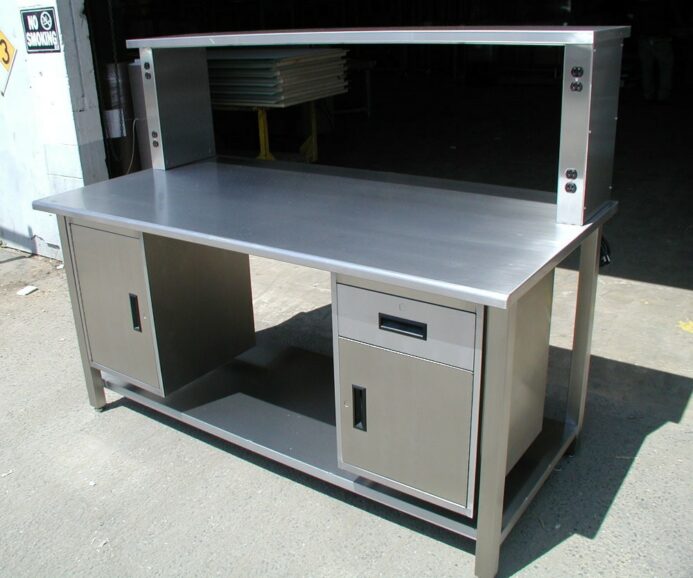Whether you’re running a laboratory at a school, workplace, or public space, it’s imperative that it’s fully compliant with all ADA rules and regulations. This includes designed lab cabinets that are accessible to everyone. Before installing a new cabinet, follow these tips to make sure it meets all ADA standards.
Think About Height
To make lab cabinets accessible to all, you must consider the height of the cabinets. If you install new cabinets too high, people in wheelchairs or with limited mobility will not be able to reach them.
Cabinets should be installed within an arm’s length for those who are disabled. In a lab with multiple cabinets, at least 50 percent need to be ADA accommodating. Since countertops cannot be more than 34” tall, cabinets should also follow this rule. Placing cabinets underneath the surface area is an easy way to make them accessible to someone in a wheelchair.
Consider Ease of Use
Even if the lab cabinets are placed in the right place according to current ADA rules, you may still need to make a few adjustments. Once someone opens the cabinet, they need to be able to reach everything that is inside. While this task may seem simple to an able-bodied individual, it’s more difficult for someone with a disability.
One way to get around this is by installing movable drawers and shelves. This way, anyone could locate the shelf they need and easily pull it out to get to the item they want. A revolving shelf is another option. Be sure to install doors that are lightweight with a soft close to make them easy to open and shut.
Drawer Knobs Are Essential
Opening lab cabinets may be challenging for someone with limited mobility or dexterity. That’s why it’s so important to include ADA-compliant drawer pulls on every cabinet door.
To meet ADA guidelines, drawer knobs must be easy to grasp with one hand. Knobs that you must pinch are not appropriate. Drawer pulls cannot require twisting or turning to operate. Most people agree that a simple U-shaped pull is the best option.
Think About Space
While it may be tempting to install as many cabinets as possible to increase storage space, doing so may make it difficult to meet ADA standards. No matter where you install new lab cabinets, they must be situated in a way that allows enough clearance for someone in a wheelchair. Whether the cabinet is open or closed, a disabled individual should to be able to maneuver around it.
You need to allow at least 40” for a wheelchair to pass through an area. This means any cabinets that are installed across from each other should allow at least this much space. If you don’t, a wheelchair user will find it difficult to turn around. It also creates a fire hazard. Check our custom laboratory tables.
Buy Lab Cabinets from a Well-Known Company
One way to ensure your cabinets stay in compliance with ADA rules is by purchasing them through a reputable source. Make sure they offer fixtures, pulls, and cabinets that are current with today’s guidelines. Click here to choose from a variety of high-quality lab furniture and cabinetry options to help you create an ADA accessible laboratory.

